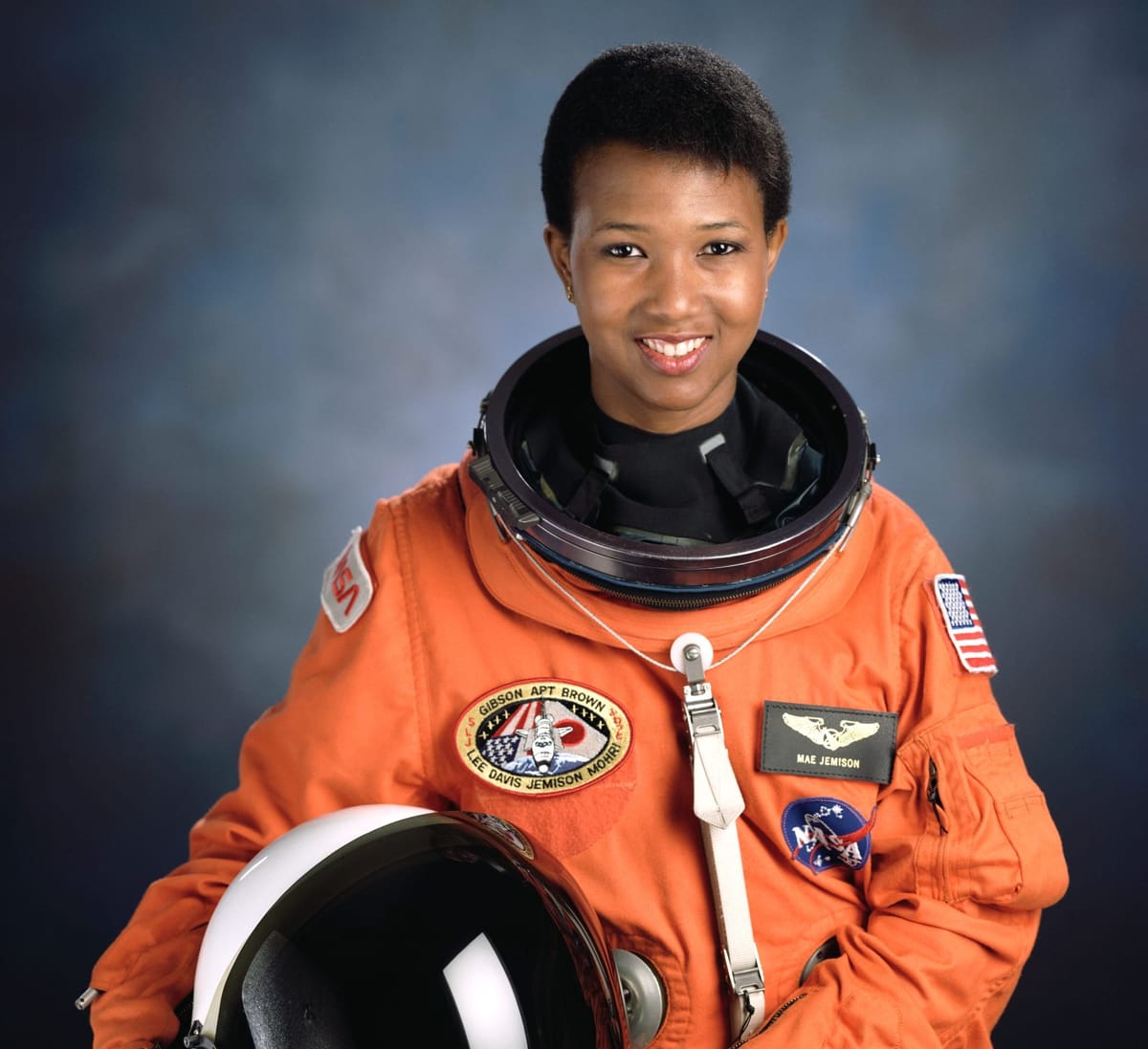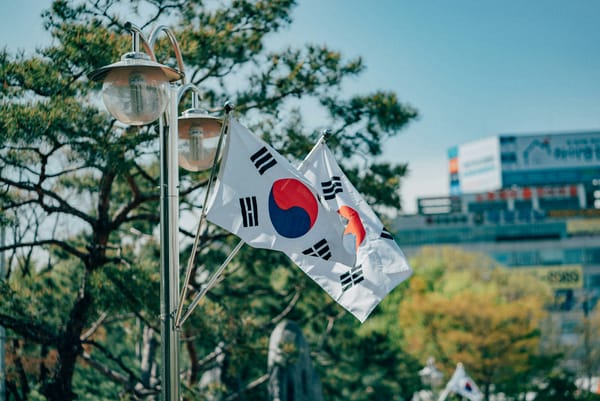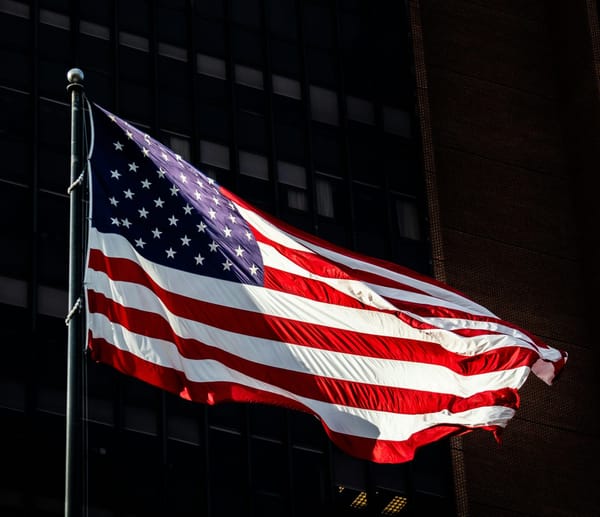Women in Science: Mae Carol Jemison

Mae Carol Jemison, born October 17, 1956, is an American engineer, physician, and former NASA astronaut. She is known for being the first African-American woman to travel into space, serving as a mission specialist aboard the Space Shuttle Endeavour during which it visited the Earth for nearly eight days on September 12-20, 1992
From Dreams to Degrees: Nurturing Childhood Aspirations through Education
Jemison was born the youngest of three children and was raised in Chicago. Her father was a maintenance supervisor for a charity organisation and her mother worked most of her career as an elementary school teacher of English and mathematics at the Ludwig van Beethoven Elementary School in Chicago, Illinois.
From a young age, Jemison was fascinated with science and knew she would someday go into space. Inspired by African-American actress Nichelle Nichols' portrayal of Lieutenant Uhura in Star Trek, Jemison's interest in space grew. In addition to science, she had a great love for dance from a young age. She learned several styles of dance, including African, Japanese, ballet, jazz and modern dance. Fulfilling her dream of becoming a professional dancer, she auditioned for the leading role of Maria in West Side Story at the age of fourteen. She did not get the leading role but was instead selected as a background dancer.

After graduating from Morgan Park High School in 1973, Jemison enrolled at Stanford University at the age of 16. Despite facing continuous discrimination from teachers, her stubborn and youthful arrogance got her through university. To this day, she argues that some arrogance is necessary for women and other minorities to be successful in a white male-dominated society.
She eventually graduated from Stanford with degrees in chemical engineering and African American Studies. In addition to that, she served as head of the Black Students Union and even choreographed a musical production called Out of the Shadows.
A while later, she earned her medical degree from Cornell Medical School. During her medical training, she travelled to Cuba, Thailand, and East Africa. Throughout this, she conducted a study funded by the American Medical Student Association and worked at a Cambodian refugee camp. Eventually, Jemison joined the Peace Corps in 1983 and served as a medical officer until 1985. During her time spent serving in Liberia and Sierra Leone, she supervised the Peace Corps' pharmacy, provided medical care and developed guidelines for health and safety issues.
Reaching for the Stars: An Impressive NASA Career
After serving in the Peace Corps, Jemison settled in Los Angeles, California. There she took graduate-level engineering courses and joined the astronaut program in October 1985. To pursue her dreams of becoming an astronaut, she applied to NASA in 1987. She was one of 15 individuals chosen out of roughly 2,000 applicants to the NASA Astronaut Group 12, the first one selected after the Space Shuttle Challenger disaster in 1986. There, she worked at the Kennedy Space Center in Florida where she took part in the verification of Shuttle computer software in the Shuttle Avionics Integration Laboratory. In 1989, she was selected to join the STS-47 crew as Mission Specialist 4 and pioneered the new astronaut role being tested by NASA: Science Mission Specialist, with a focus on scientific experiments.
So, on mission STS-47, the cooperative mission between the United States and Japan, Jemison logged a total of 190 hours, 30 minutes, 23 seconds in space and orbited the Earth 127 times. The mission crew was split into two shifts, Jemison was assigned to the Blue Shift. It is said that she would begin communications on her shift with the salute "Hailing frequencies open", a quote from Star Trek. With her on the flight, she brought a poster from the Alvin Ailey American Dance Theatre, a West African statuette and a photo of Bessie Coleman, the first African American with an international pilot license.
STS-47: A Series of Experimental Procedures
The mission STS-47 included 43 Japanese and United States life science and materials processing experiments. Together with Japanese astronaut Mamoru Mohri, Jemison was trained to use the Autogenic Feedback Training Exercise, a technique using biofeedback and autogenic training as a means to possibly treat motion sickness, anxiety and stress-related disorders.

She participated in several other experiments. One involved NASAs Fluid Therapy System, developed by Sterimatics Corporation, a set of procedures to produce water for injection. She would then use said water to produce saline solution in space, using IV bags and a mixing method developed by Baxter Healthcare. To add on, Jemison was a co-investigator of two bone cell research experiments as well as an experiment where female frogs were induced to ovulate, then had the eggs fertilised and observe how tadpoles developed in zero gravity.
Accomplishments Post-NASA
Jemison resigned from NASA in March 1993 to start a company, The Jemison Group Inc. a consulting firm which investigates the social and cultural impact of technological advancements and design on society. In addition to that, she founded the Dorothy Jemison Foundation for Excellence; The Earth We Share, a science camps for students ages 12 to 16, is an example of one of the many projects of the foundation. The camps have been held at Dartmouth College, Colorado School of Mines, South Africa, Tunisia and Switzerland. The foundation has also sponsored other events including the Shaping the World essay competition, the Listening to the Future survey for obtaining opinions from students, the Earth Online chatroom where students can discuss science-related topics and the Reality Leads Fantasy Gala.
After hearing that she was a fan of Star Trek, actor LeVar Burton asked her to appear in an episode. Jemison agreed and thereby became the first real astronaut to be on an episode of Star Trek: The Next Generation, playing the role of Lieutenant Palmer in the episode, "Second Chances."
In 1999, she accepted the Andrew D. White Professor-at-Large position at Cornell University. Two years alter, she wrote her first book called Find Where the Wind Goes, which was a children's book about her life.
As of 2019, Jemison is leading the 100-Year Starship project through the United States Defense Advanced Research Projects Agency with the aim of ensuring that human space travel to another star is possible within the century. She is also a member of the National Academy of Sciences’ Institute of Medicine, and has been admitted to the National Women’s Hall of Fame, National Medical Association Hall of Fame and Texas Science Hall of Fame. She has received multiple awards and honorary degrees including the National Organization for Women’s Intrepid Award and the Kilby Science Award. She currently lives in Houston, Texas.
All in all, Mae Carol Jemison has led an inspiring life thus far. She pursued her dreams, and continues to do so, no matter how big they are or how unachievable they seem. Using her platform and knowledge to inspire young people and share her passion for science, Jemison has made a positive impact on the world.



